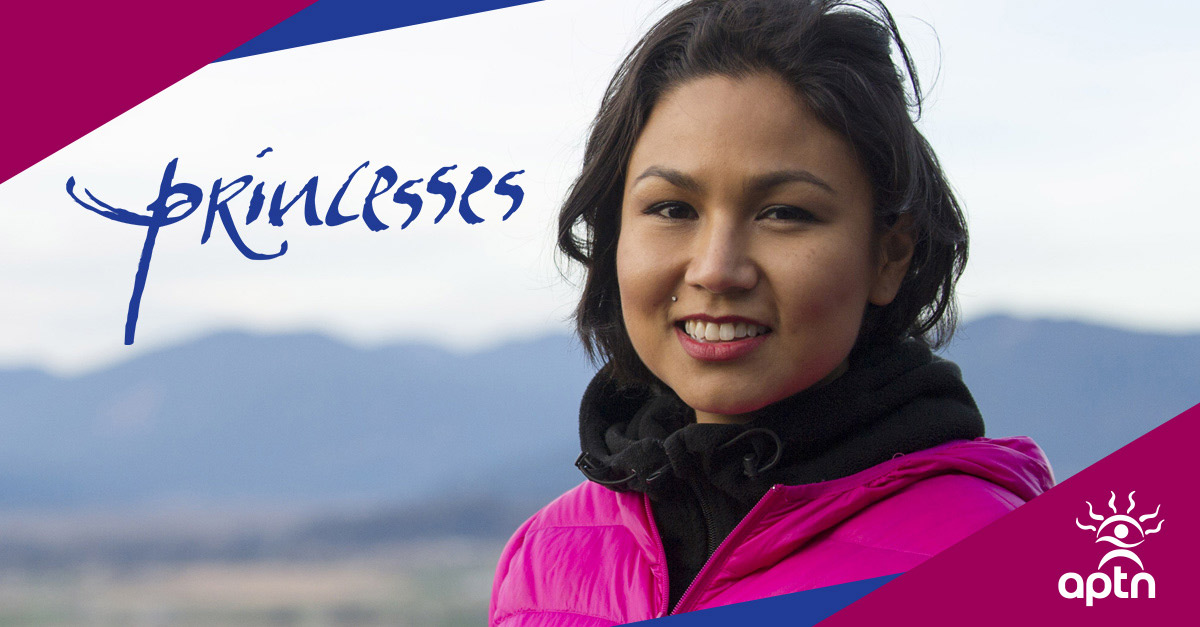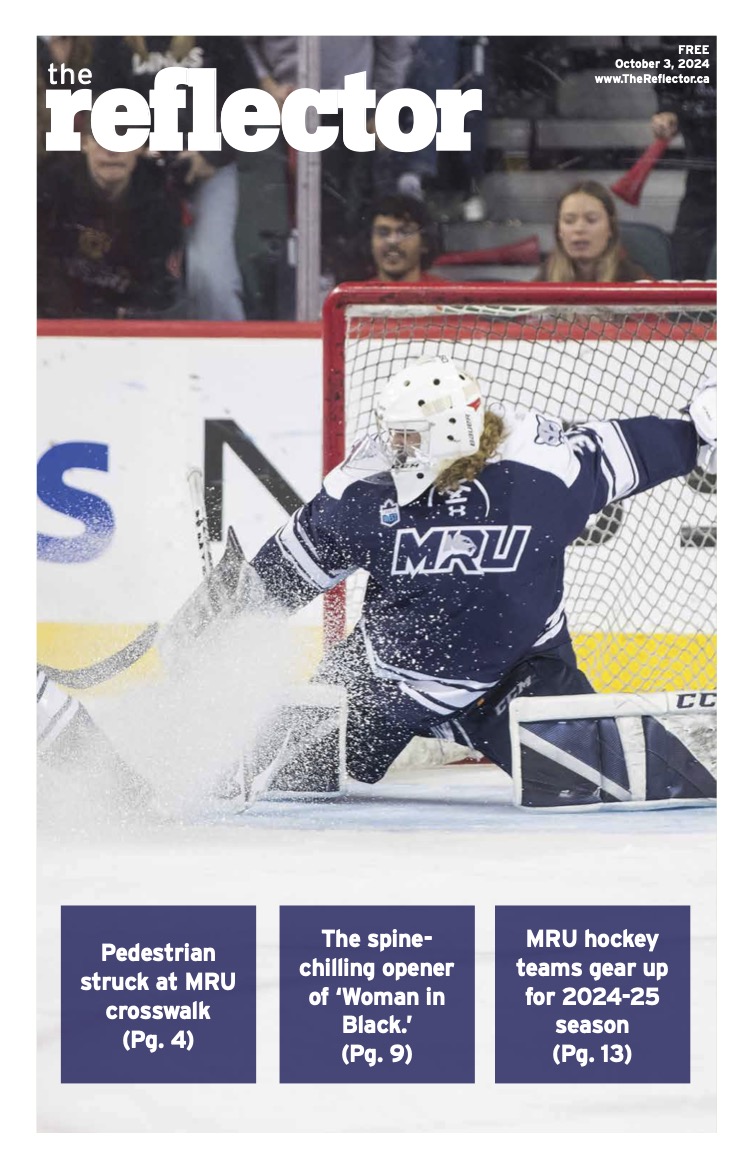Patti Derbyshire turns research into action

Deep beauty and creating a more inclusive runway
By Amber McLinden, Features Editor
Most people have heard the phrase, “beauty is only skin deep.” It refers to the idea that beauty is physical and character is something entirely different. However, some people might not agree with that definition. Angie-Pepper O’bomsawin was one of those people.
O’bomsawin created a show called Princesses, which aired in 2016 on the Aboriginal Peoples Television Network (ATPN). The series probes into standards of beauty held by different Indigenous nations and looks at the myths associated with the concept of beauty.
This is what prompted Patti Derbyshire, the chair and an associate professor at Mount Royal University’s Department of Entrepreneurship, Marketing and Social Innovation, to start her research on the topic of deep beauty.
The series, through interviewing numerous Indigenous women, explores what Derbyshire refers to as “deep beauty,” or the concept that beauty is not only skin deep.
“Deep beauty describes this idea that these women are giving voice to, which says, ‘we kind of reject this idea of beauty just being physical.’ For Indigenous women [they] see [their] beauty as intellectual, as spiritual, as cultural, as emotional and there’s a physical component to it,” explains Derbyshire.
The concept gives a name to the way the Indigenous women talk about beauty in the series. While you can’t look it up on an online dictionary, Derbyshire says it’s important nonetheless.
“I think in an era where people are really trying to confront Missing and Murdered Indigenous Women, and how Indigenous women continue to be marginalized. It’s really, really easy to call something or someone ugly for being outside a norm, and then what follows are acts of dehumanizing and distancing and that in particular is really problematic given that then you can overwrite or erase someone’s identity. Or worse.”
Derbyshire’s research might sound familiar. Many people know her work through the Indigenous fashion show held every year at Mount Royal University, called Otahpiaaki. The fashion show aims to decolonize the runway, by showcasing a different type of beauty. It gives Derbyshire the chance to observe the individuals who participate year round and to create a space where colonial beauty standards aren’t upheld.
How do you decolonize a runway? Derbyshire explains that the runway is often the standard of beauty we tend to see across the fashion industry, which is mainly white, thin and is exclusive to certain areas of the world. She says the best way to decolonize the runway is by disrupting the norm.
“Some concrete ideas that we’ve already observed at Otaaphiaki, at our own shows: families are present. There’s no question that your family comes to celebrate your creativity. There’s no question that you want your daughters and sisters and mothers and the men in your life,” explains Derbyshire.
“So that’s already decolonizing, the decorum is different, the protocol is different, the expectation even in the business world for the value for money is different.”
That’s only the surface of her research. On a more academic scale, Derbyshire is currently spending time researching deep beauty in an academic context. She says the question she seeks to answer has to do with survivance, which means “Indigenous self-expression in any medium that tells a story about our active presence in the world now,” according to Survivance.org.
Derbyshire’s research asks “is this idea of deep beauty, are these contemporary Indigenous designers we work with, and do the women and girls who are observing Indigenous fashion on the runway, is this an act of survivance, or is it engagement with survivance?”

The show Princesses started Patti Derbyshire on her research journey. She will be using it for her critical discourse analysis. Photo courtesy of the Aboriginal Peoples Television Network
It’s a complex question, which is why Derbyshire’s research will unfold over 10 years. She’s already begun with a critical discourse analysis of the Princesses series. This involves watching all the episodes and analyzing the language used in each episode to create a better understanding of deep beauty to continue with her research.
“I should be able to make some observations, some deeper observations about deep beauty and the role it plays in this idea of presence and continuance of native stories, which are kind of at the heart of this idea of survivance,” she says.
The next step after the critical discourse analysis, which she describes enthusiastically as “fun,” is to gather individuals who will watch the show with her and express their feelings and thoughts to Derbyshire. This will be a nonprobability sample, allowing her as a qualitative researcher to make theoretical contributions rather than a grand claim.
For this portion of the research, she says it’s extremely important that she doesn’t fall into the role of ethnographer, or in non-researcher terms, a non-participatory observer, explaining that this can be particularly problematic when it comes to a non-Indigenous person researching topics relating to Indigenous peoples.
“I have guideposts,” she explains. “I had coffee last week with one of my Indigenous colleagues at the university and I get her to check me. I get her to remind me of other literatures that ensure, as much as a person can, that this isn’t kind of 1950’s social science.”
So how does Derbyshire avoid the role of ethnographer? She allows participants to express themselves however they want.
“I will ask people to write in their own words or sketch or do whatever they want to do or say what they need to say about what we’re watching and try not to influence that,” she says.
Ethics is almost always a concern when it comes to sociological research because people are usually involved as subjects. However, it is even more of a concern when those people involved are Indigenous. Canada has a long history of enforcing colonialism through research with Indigenous peoples, imposing research findings on them without consulting them for their opinions.
“Consent is always important in research but it’s extraordinarily important with Indigenous projects like this,” she explains.
“I think it’s really important for me to do everything I can to create the conditions for people to represent their knowledge in the ways they prefer. So whether that’s talking to me, whether that’s writing in a journal, whether that’s sketching and telling me about what is sketched, whether that’s through conversations with others, it’s my job to make sense of expressions and to stay out of the way while people express what they feel.”
Derbyshire says when the research is completed she will likely write a conventional academic research paper, but that she is more drawn to the action that will result from her research.
“It would be really important to me, actually, that the knowledge outcomes from doing this work are useful. Are useful to designers, are useful to young women, are useful to moms or aunties or projects that educators undertake for women and girls.”



